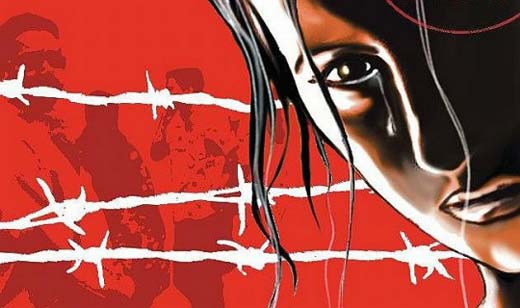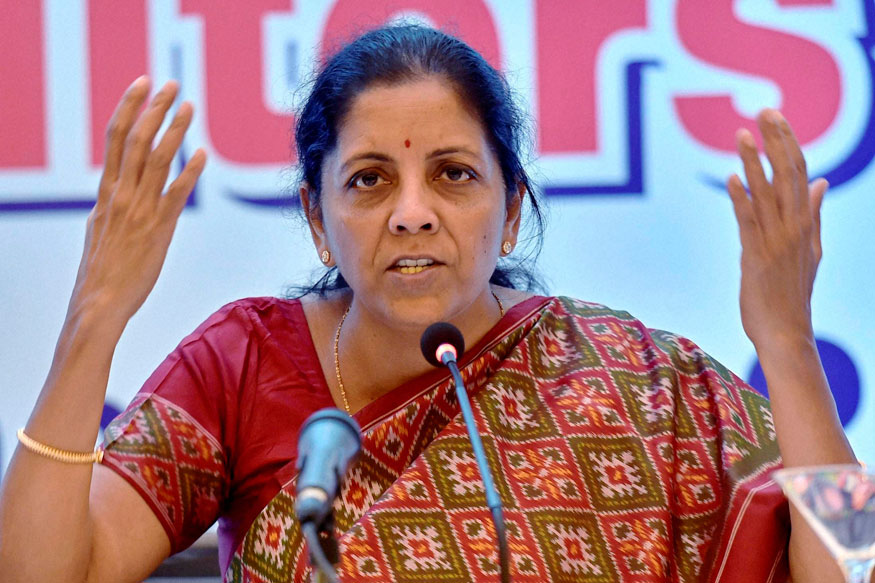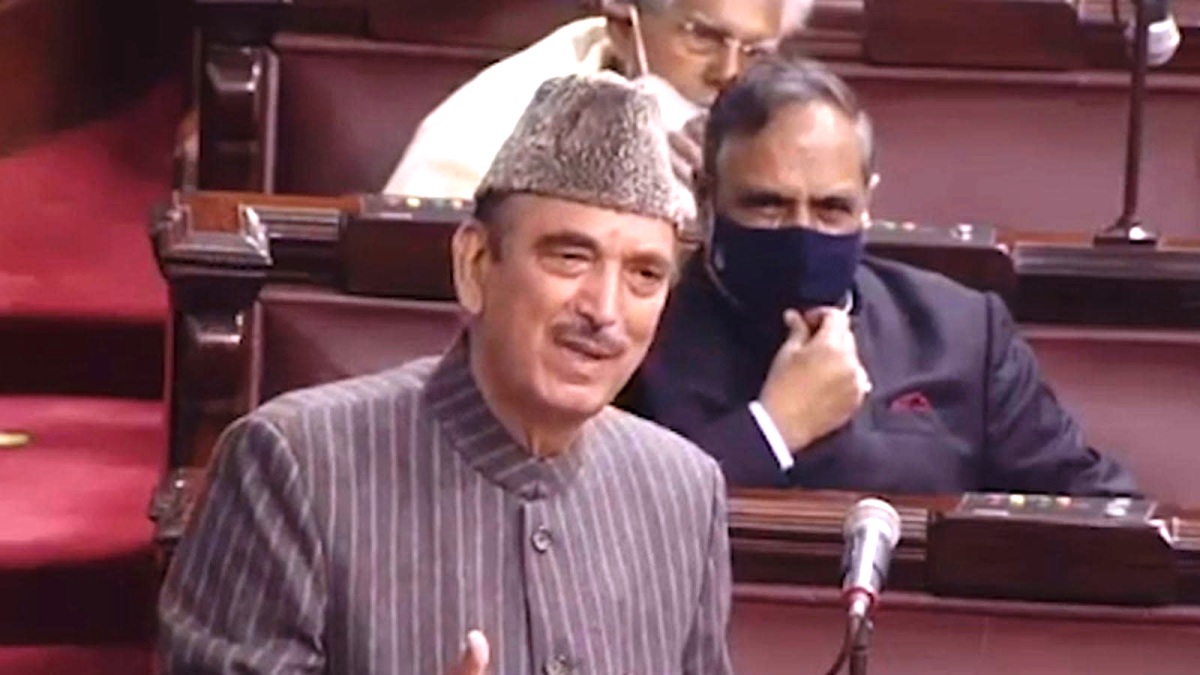Hurriyat Conference led by Mirwaiz Umar Farooq Monday released a report on the 24th anniversary of Kunan Poshpora incident wherein 53 women were raped by an army unit on February 23, 1991. As per the report, “rape, outrage of modesty and other forms of violence against women in the last 25 years have been used as a weapon of war in Kashmir.” For the interest of its readers, Kashmir Life reproduces the report
The impact of violence and trauma on women living in a conflict zone leads to a variety of physical and social problems. During conflicts, women are more exposed to insecurity because they are pre-occupied with the children and cannot run away to safety. Conflict destroys the safe environment provided by a house and a family, leads to inadequate nutrition, education and unemployment.
The women of Jammu & Kashmir in general and those of the valley of Kashmir in particular have been going through these traumatic conditions for the last more than two decades of conflict. The impact is huge and the society in Kashmir is scattered, leaving even children either orphaned or as household heads.
Stress, trauma, depression, spontaneous abortions and miscarriages among women are common. The conflict has created a situation of tremendous fear and uncertainty in the lives of women in Kashmir. Another consequence of conflict has been the increasing distrust even amongst family members and growing domestic violence.
Rape and sexual violence as weapon of war
Rape and sexual violence has been used as a weapon of war in Kashmir. In a study conducted in Kashmir by Medicins Sans Frontierers in 2006 says, “11.6% of interviewees reported that they had been victims of sexual violence since 1989 and almost two-thirds of the people interviewed (63.9%) had heard about cases of rape, while one in seven had witnessed rape. Like any other armed conflict situation, the continuous violent situation prevalent in Kashmir since 1989 has hit the Kashmiri women in every aspect, every day due to the ongoing-armed conflict women continue to suffer. She is a mother grieving for her missing or dead sons, a widow or a half widow fighting for her existence and the bringing up her children and a refugee to find shelter once displaced from her land”.
Kunan and Poshpora Incident
A shameful act of violence against women in Kashmir was committed by the soldiers of Indian Army in twin villages of Kunan and Poswhpora. During the intervening night of February 23 and 24, 1991, a battalion of the 4th Rajputana Rifles of the Indian Army allegedly entered the village of Kunan-Poshpora in Kupwara district of Kashmir late at night for a ‘search’ and ‘interrogation’ operation. The men of the village were rounded up and kept in custody just outside the villages. At least 53 women – aged 13 to 60 years – were gang raped by the soldiers for several hours together. According to the villagers the number is much higher and men in uniform involved in the heinous crime were not brought to justice.
After the incident Police had lodged an FIR under Section 376, 452 and 342 at police station Trehgam against the Army.
In 2011, SHRC asked the state government to re-open the case while judicial Magistrate Kupwara ordered re-investigation of the case with an officer not below the rank of SP as the investigating officer.
It is unfortunate that Jammu and Kashmir High Court has stayed the investigation into Kunan-Poshpora mass rape case. A single bench of Justice Tashi Rabstan stayed the orders of Judicial Magistrate Kupwara of June 2013 in which the court had asked for re-investigation.
Many of these rape victims have died and the survivors are denied justice after 24 years of their struggle.
Health of women in Kashmir
Healthcare has been one of the worst affected areas. Access to health care is poorest in Kashmir.
According to the recent National Family Health Survey, “61 % of currently married women in Kashmir report one or more reproductive health problems. This is substantially higher than the India’s national average of 39 percent. The same survey revealed that the prevalence of reproductive health problems in Kashmir generally decreases with age and that reproductive health problems are slightly more common among rural women (61%) than among urban women (57%). 73% of women in the Kashmir region report one or more reproductive health problems, compared with 47 % of women in the Jammu region. Reproductive health problems are far more common among Muslim women (72%) than among Hindu (47%) or Sikh women (32 %). It is hard to definitively attribute the reasons for these health trends in Kashmir – but certainly the impact of conflict on the performance of the healthcare system and the lack of resiliency and responsiveness of the healthcare system towards women’s health are certainly among the key factors”
Infertility
Thousands of women in Kashmir are increasingly suffering from infertility. Couples are finding hard to fight the problem which has saddened hundreds of families across the valley. Infertility is affecting the younger age group at an alarming rate. Late marriages, hormonal imbalance, unhealthy lifestyles and stress as major reasons for infertility-related problems.
Studies at the Sher-e-Kashmir Institute of Medical Science (SKIMS) indicate 15.7 per cent women at childbearing age will never have an offspring without clinical intervention. A further 14 per cent of women are unable to conceive because of unknown medical conditions. Conflict has resulted in many psychiatric problems in women, including depression, Post Traumatic Stress Disorder (PTSD) and anxiety, which directly affect child birth. According to psychiatric research, 800,000 people in Kashmir – including women – are affected by PTSD.
Psychiatric Problems:
Quoting the doctors at the only Govt. Psychiatric Hospital of Srinagar a study of University of Kashmir says that women comprise more than the sixty- percent of the patients they examine. Women bear the brunt of conflict, women often finds themselves unexpectedly as the sole manager of household, sole parent and care taker of elderly relatives. They are not able to accept this responsibility and are finding it very difficult to cope with this situation leading to stress related disorders.
Women in rural areas often suffer more than anybody as incidents of violence go unreported there and also ignorance and illiteracy being high. Women are said to be emotionally stronger than men are, but the impact of violence of conflict has rendered their emotional strength into weakness engulfing them in a constant state of depression. Their injuries are more than physical and unlike men they do not share their tragedy with anybody and that makes them all the more ill. Women form majority of patients of Major Depressive Disorders followed by Post Traumatic Stress Disorder (PTSD), almost 50 percent of female patients coming to this hospital suffer from this syndrome.
The victims of rape or molestation who are undergoing psychological trauma do not visit the hospital. Also the suicidal cases don’t come to the psychiatric hospital, they are treated in other hospitals, but they never reach the psychiatric hospital owing to social ostracism. Women have become increasingly suicidal and resorting to drugs via sleeping pills, injections, and inhalations. Initially women suffering from other forms of mental sickness had certain inhibitions to visit a psychiatric hospital but now the number of female patients visiting hospital has shown a considerable increase.
Women are more sensitive, and therefore the incidence of suicides among them is much higher than among men.
A SKIMS study carried out on 112 young women suffering from Polycystic ovary syndrome (PCOS), found that 65 to 70 per cent of them suffered from psychiatric illnesses, eight patients suffered from obsessive compulsive disorder (OCD), five had PTSD, and 27 were depressed.
91 percent of widows surveyed had not considered remarriage.
The story about the health of women in Kashmir does not end here. Besides the sick reproductive health, the general health of Kashmir women is fasting deteriorating. Hypertension and orthopaedic problems have become common.
One of every 10 women above the age of 40 years is hypertensive. Fifty percent of women above the age-group of 60 years are hypertensive. However, the ratio of female hypertensive patients below 40 years of age is 15-20 percent.
A researcher from Kashmir University has reported that 30,000 to 40,000 orphans and widows lead a miserable life and no one is solicitous about their maintenance.
The number of patients who visited Srinagar’s only psychiatric hospital increased from 6 per day in 1990 to 250-300 in 2000 per day. The total number of patients rose from 1,760 in 1990 to 18,000 in 1994, to over 50.000 in 2003. And in 2014 the number patients had increased to 120000.
Human Rights Division of All Parties Hurriyat Conference is deeply concerned over the worst situation of women in Kashmir. We demand to recognize sexual violence and rape in Kashmir as an international war crime and a crime against humanity. The worst situation of women in Kashmir, we feel it is all because of the conflict, Violations of the human rights of women in situations of armed conflict are violations of the fundamental principles of international human rights and humanitarian law.
Violence against women, especially rape, has added its own brand of shame. Kashmiri civilians are caught up in the conflict and have suffered a range of abuses – women and girls in particular have being targeted, with rape and other forms of sexual violence being widely reported. There is a steady daily loss of life. Common men, women and children are caught between, security forces, militants, renegades, unidentified gunmen, state apparatus and political parties in the alliance and outside the alliance.
International courts have also viewed rape as a form of torture. Like torture, rape is used for such purposes as intimidation, degradation, humiliation, discrimination, punishment, control or destruction of a person. Like torture, rape is a violation of personal dignity, and rape in fact constitutes torture when it is inflicted by or at the instigation of or with the consent or acquiescence of a public official or other person acting in an official capacity.
Another recent expansion in the international definition of rape involves situations where rape was committed on a large-scale during a conflict. In these situations, courts have been willing to view rape during conflict as a crime of genocide, a war crime, or a crime against humanity.
Rape has been interpreted by the International Criminal Court (ICC) as constituting genocide. UN Special Representative on Sexual Violence in Conflict, Ms. Zainab Hawa Bangura said “Sexual violence in conflict needs to be treated as the war crime that it is; it can no longer be treated as an unfortunate collateral damage of war.”
For the past 25 years, civilians caught up in the conflict have suffered a range of abuses – women and girls in particular have being targeted, with rape and other forms of sexual violence being widely reported. Rape committed during war is often intended to terrorize the population, break up families, destroy communities, and, in some instances, change the ethnic make-up of the next generation. Rape survivors can also face a catastrophic rejection by their families and may be cast out from their communities.
Rapes and sexual assaults have been extensively and routinely used as a weapon of war in Jammu and Kashmir. Many incidents of rape are recorded by different Human Rights Organizations in Kashmir.
In a bid to end such gender-based violence in J&K, All Parties Hurriyat Conference has demanded the revocation of draconian laws like AFSPA, which provide free hand to government forces to commit worst type of Human Rights Violations
Human Rights Division of All Parties Hurriyat Conference will fight for justice for survivors of sexual violence and rape.
Annexure:
The UN Security Council on sexual violence in conflict
The United Nations Security Council has done much in recent years to help raise awareness and trigger action against sexual violence in conflict:
Security Council resolution 1325 (2000) called on Member States to increase the participation of women in the “prevention and resolution of conflicts” and in the “maintenance and promotion of peace and security.” It called upon parties involved in armed conflict to abide by international laws that protect the rights of civilian women and girls and to incorporate policies and procedures that protect women from gender-based crimes such as rape and sexual assault.
Security Council resolution 1820 (2008) called for an end to the use of acts of sexual violence against women and girls as a tactic of war and an end to impunity of the perpetrators. It requested the Secretary-General and the United Nations to provide protection to women and girls in UN-led security endeavours, including refugee camps, and to invite the participation of women in all aspects of the peace process.
Security Council resolution 1888 (2009) detailed measures to further protect women and children from sexual violence in conflict situations, such as asking the Secretary-General to appoint a special representative to lead and coordinate the UN’s work on the issue, to send a team of experts to situations of particular concern, and to mandate peacekeepers to protect women and children.
Security Council resolution 1889 (2009) reaffirmed resolution 1325, condemned continuing sexual violence against women in conflict situations, and urged UN Member States and civil society to consider the need for protection and empowerment of women and girls, including those associated with armed groups, in post-conflict programming.
Security Council resolution 1960 (2010) asked the Secretary-General to list those parties credibly suspected of committing or being responsible for patterns of sexual violence in situations on the Council’s agenda. It also called for the establishment of monitoring, analysis, and reporting arrangements specific to conflict-related sexual violence.
Security Council resolution 2106 (2013) aimed to strengthen the monitoring and prevention of sexual violence in conflict.
Security Council resolution 2122 (2013) reiterated the importance of women’s involvement in conflict prevention, resolution and peace-building.
The Secretary-General’s Special Representative
In 2010, following Security Council resolution 1888, the Secretary-General appointed Margot Wallström as Special Representative of the Secretary-General on Sexual Violence in Conflict. She was succeeded, in September 2012, by Zainab Hawa Bangura.
The job of the Special Representative is to provide coherent and strategic leadership, and to promote cooperation and coordination through UN Action. Upon taking up her post, Ms. Bangura, the former Minister of Health and Sanitation of Sierra Leone, outlined six objectives she intends to pursue:
Ending impunity for perpetrators and seeking justice for victims;
Protecting and empowering civilians who face sexual violence in conflict, in particular women and girls who are targeted disproportionately by this crime;
Mobilising political leadership to address this issue;
Strengthening coordination and ensuring a more coherent response from the UN system;
Increasing recognition of rape as a tactic of war;
And, finally, emphasizing national ownership, leadership and responsibility in the fight to put an end to this scourge.
















